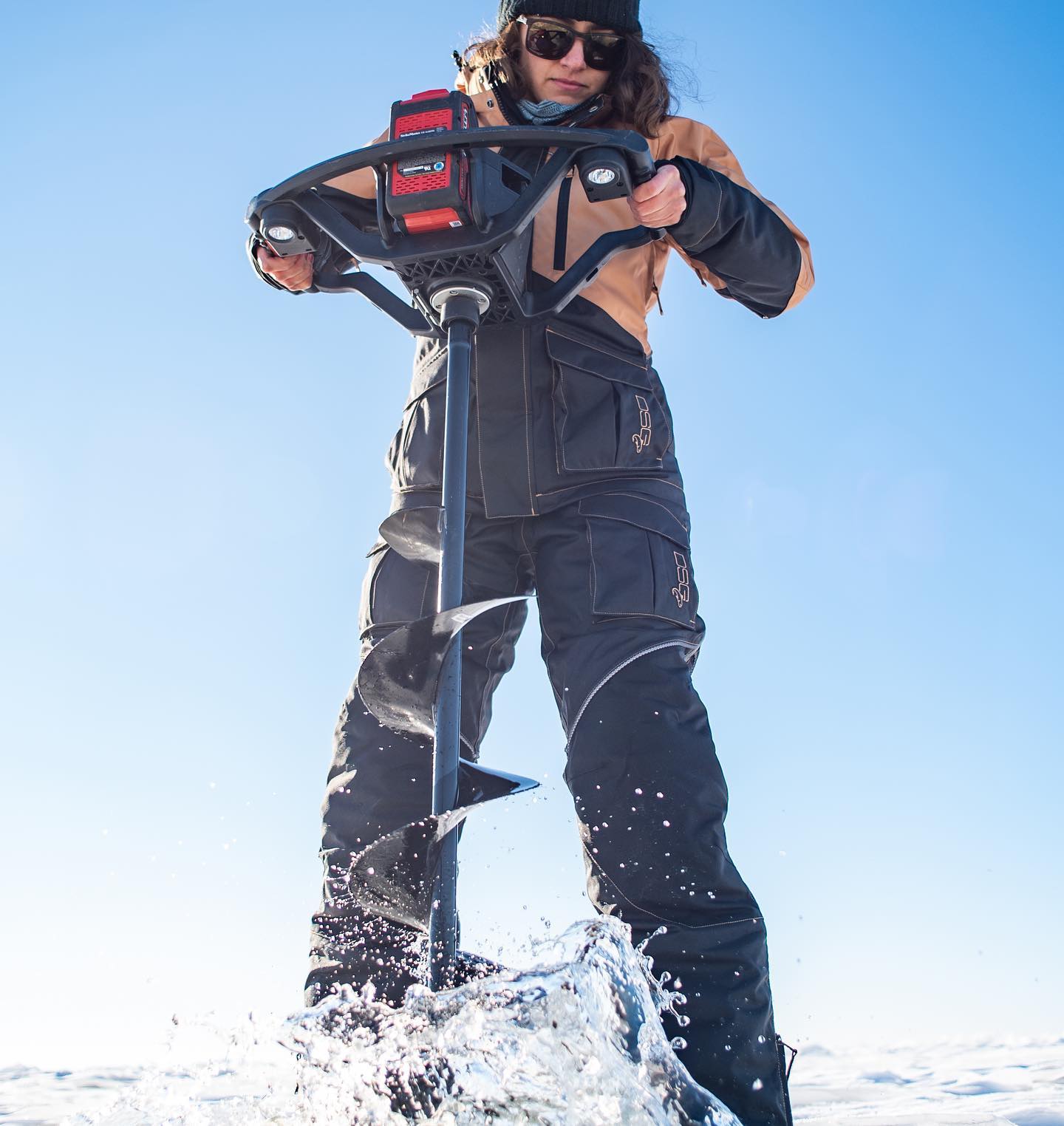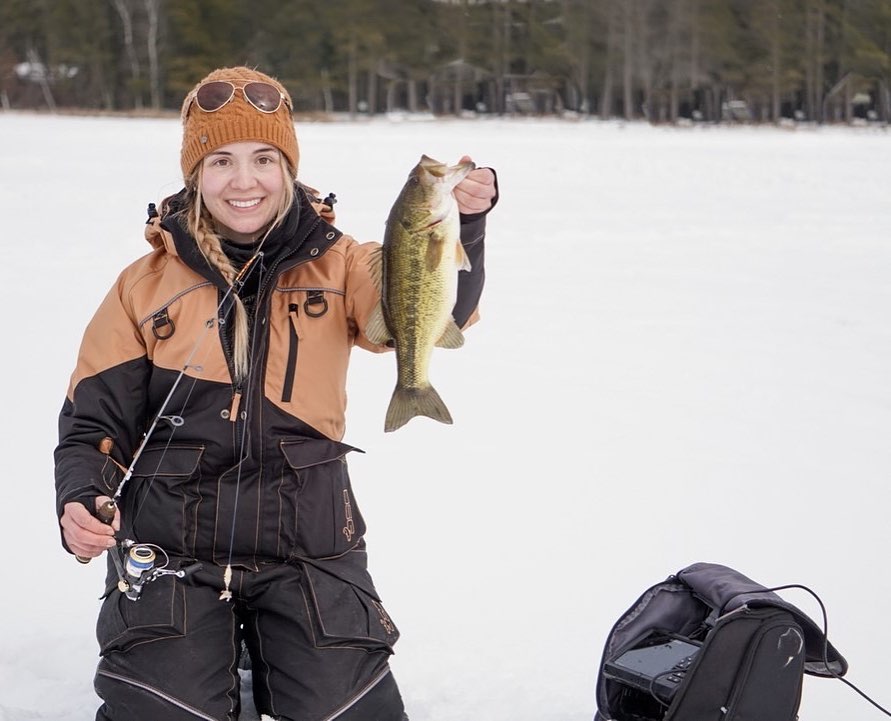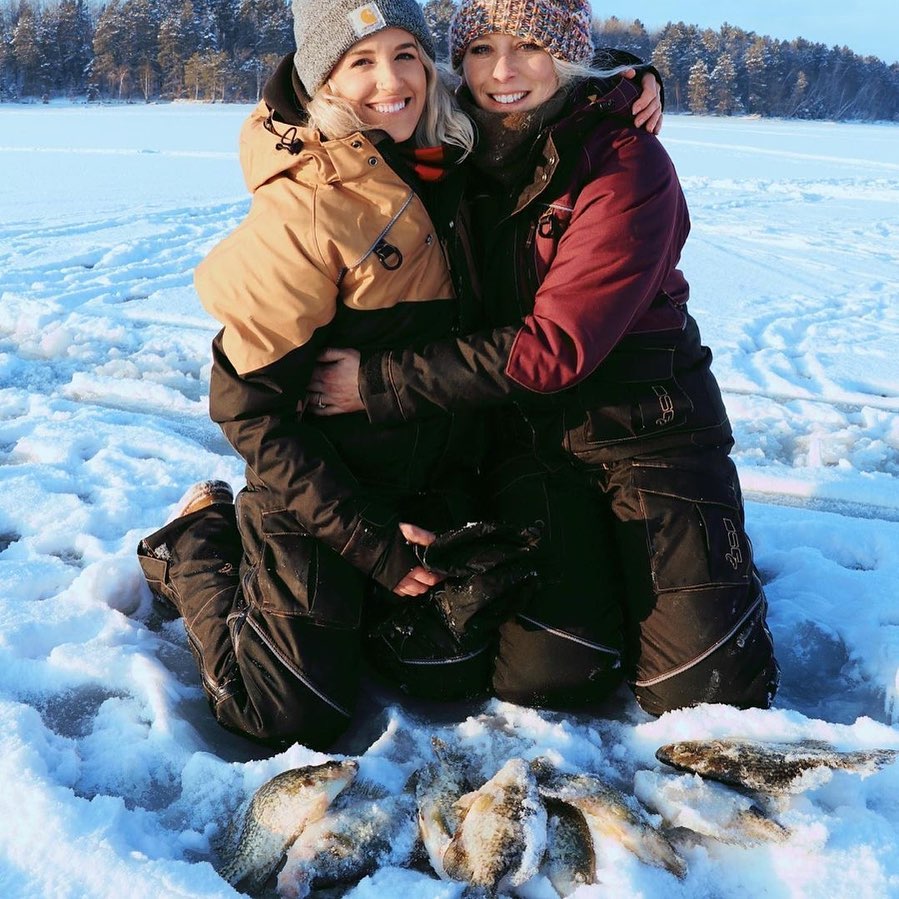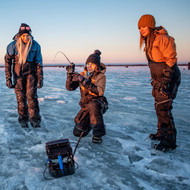Ice Fishing Tools and Techniques for Beginners
Posted by Samantha Simma on Feb 12th 2021
Ice fishing turns the beauty of a frozen body of water into something much more exhilarating. Imagine pulling a fishing line from the cold, dark depths of that water, not knowing what is or might be at the other end? That budding excitement is what keeps hardwater anglers returning to the ice even during winter’s worst weather conditions. Ready to give it a try? Before jumping into the world of ice fishing, review the following ice fishing tools and techniques for beginners you’ll need to aid your success.

Tools
For starters, stock up on proper ice fishing gear and equipment:
- Our number one tip: invest in proper ice fishing gear. What does that mean? It’s gear that’s going to keep you warm and safe on the ice, in all winter conditions. We may be biased, but our Avid jacket and bibs excels at both. Its Flotex insulation will keep you warm, without being heavy and bulky, and when the jacket and bibs of this suit are worn together, they are made to assist your flotation abilities in the event of an emergency. Underneath these exterior layers, be sure to layer up with base layers made of breathable, moisture-wicking materials, like our D-Tech Base Layers.
- You’re probably wondering, “How am I going to get through the ice?” Well, you can go the manual route, with an ax or shovel, and invest in quite the cardio workout. Or, add in an ice auger to your set of tools. These come in manual or powered versions and will help you get through the ice and to the fish in no time.
- Ice fishing is generally done with either tip-ups (mechanical ice traps) or rods and reels, or a combination! Tip-ups allow you to fish more holes at once because you don’t need to physically tend to them all simultaneously. Find out more about the different tip-ups available on our blog, Types of Tip-Ups.
- Next up is your bait. Like open water fishing, there are a lot of options for what to hook the fish with. Between live bait and lures, you’ll come to have your own preferences, while keeping in mind what you learn about what the fish prefer as well.
- If it’s in your budget, fish finders are an asset to catching more fish. It’s hard to know what’s going on beneath the ice without one, unless you want to make decisions based on a lot of trial and error.
- An ice shelter is another optional ice fishing asset. These days, they’re available at a variety of price points, and in styles that are easy to transport and set up on the ice. Having a shelter that’s windproof and water-resistant will help you weather extreme winter conditions and fish longer on the ice.
In addition to these tools of the trade, you’ll want to pack along food (depending on how long you plan on fishing), beverages, and safety equipment. Some important safety gear to consider having on hand includes: a first aid kit, ice chisel, safety picks, a throw bag and whistle. You can never have too much safety gear.

Techniques
So much about the success of any sport is dependent on practice. Undoubtedly, the more you fish, the more you’ll learn. But it also doesn’t hurt to get a few helpful hints under your belt as well. With an open mind, give the following a try on the ice:
- When working with the various bait and lures you have available to you, take the time to get to know the pros and cons of each one. If you switch it up too often, you’ll have trouble pinpointing what works and when. In all ice fishing circumstances, patience is essential!
- Follow the ice safety guidelines, which are: only walk on and fish ice that is at least four inches thick. Beyond that, there should be at least 5-6 inches before driving a snowmobile or ATV on the ice; 8-12 inches for small cars and trucks; and 12-15 inches for medium-sized trucks. Test the ice’s thickness with a chisel.
- Don’t let your holes freeze over. Have an ice skimmer handy to keep the hole clear of ice and check on tip-ups to make sure they’re not freezing to the ice. For holes without tip-ups, you can do double duty by covering them with a rubber mat or something similar: this will slow ice build-up while preventing light from filtering through the hole and disturbing the fish.
- In the winter, underwater vegetation dies, reducing the oxygen levels in the water. Oxygen deprived fish move around less. When you can, fish over areas that offer healthy, living vegetation. If you snag some weeds on your line or auger, check to see if they’re dead and rotting. Know that shallower areas will support more winter vegetation because there they’re still able to obtain some light through the ice.
- Get to know the body of water you’ll be fishing. The topography of the bottom is super helpful for determining where the fish are likely to be, based on any underwater drop-offs, rock beds, etc. If you’re unfamiliar with the topography, don’t be afraid to get to know the body of water from the surface by moving around on the ice when you’re not having much luck.
- Celebrate your small fish as small victories. If you can get into the mindset that every fish you pull through the ice is a victory, you’ll have a much more positive outlook on the sport and improved outcomes down the line. Don’t be disappointed when every fish isn’t a trophy, because ice fishing isn’t an all or nothing sport. It’s important to be persistent and patient as you learn and grow in the sport.


